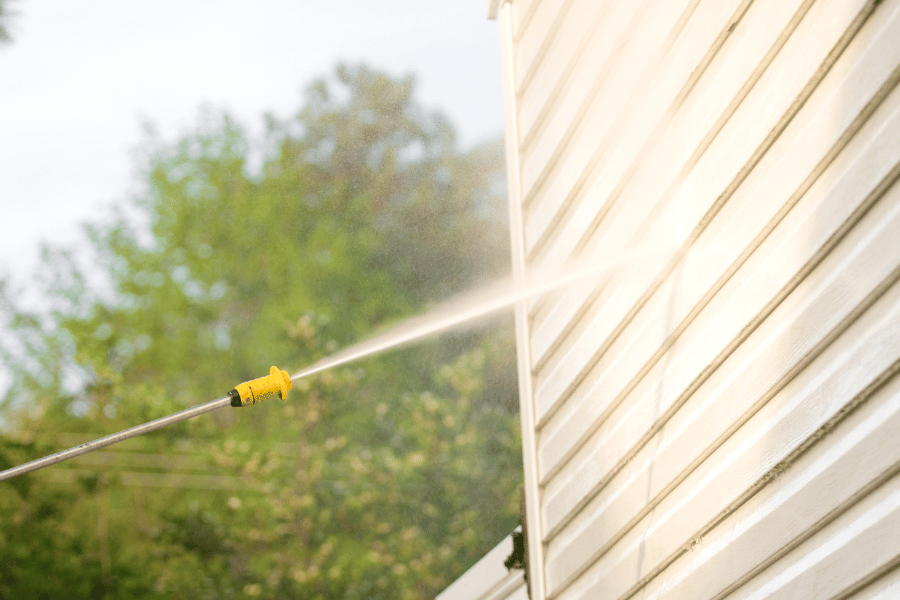Painting the exterior of your home is one of the most impactful ways to refresh its appearance, protect the siding, and enhance its curb appeal. If not done correctly, you might notice streaking—unsightly lines or uneven patches of paint—that can ruin the final look.
Streaking occurs for various reasons, from weather conditions to improper painting techniques. Fortunately, with the right preparation and techniques, you can achieve a smooth, streak-free finish that stands the test of time.
Here’s how to ensure your exterior paint job comes out perfectly smooth and streak-free.

1. Choose the Right Paint and Tools
A high-quality paint specifically formulated for exterior surfaces is crucial to a successful project. Premium paints are designed to resist the elements and provide better coverage, which reduces the chances of streaks.
Make sure to pick paint that suits the material of your home’s exterior—whether wood, brick, or vinyl siding.
The right tools also make a significant difference. Use a high-quality paintbrush for trim and smaller areas, and invest in a good roller or sprayer for larger surfaces. A roller with the appropriate nap (thickness) for your siding type will provide more even coverage, reducing the chance of streaks.
2. Prep Your Surfaces Properly
Preparation is key to avoiding streaks in your paint. Dirt, debris, or old peeling paint can interfere with the new paint’s ability to adhere properly, causing streaks or unevenness.
Before you start painting, clean your home’s exterior thoroughly. Use a pressure washer to remove dirt, mildew, and flaking paint, but be sure to allow the surface to dry completely before you begin painting. Moisture trapped in the walls can lead to paint streaking or peeling later on.
In addition to cleaning, sand any rough or uneven areas, and scrape off any loose paint. Applying a high-quality primer before the paint will help smooth out the surface, ensuring better adhesion and a consistent finish.
3. Paint in the Right Weather Conditions
The weather on painting day plays a major role in the outcome of your project. Extreme heat, cold, or humidity can cause paint to dry too quickly or unevenly, which often leads to streaks.
Ideally, you want to paint on a mild day when temperatures are between 50°F and 85°F, and the humidity is low.
Avoid painting in direct sunlight, as this can cause the paint to dry too quickly, leading to streaks or an uneven finish.
Start early in the morning or late in the afternoon when the sun isn’t directly hitting the surfaces you’re working on. Also, check the weather forecast to ensure there’s no rain predicted for at least 24 hours after painting.
4. Use Proper Painting Techniques
How you apply the paint can be just as important as the type of paint you use. For the best results, follow these painting techniques:
- Use thin coats: Applying thick layers of paint might seem like it will save time, but it often leads to uneven drying and streaks. Instead, apply thin, even coats and allow each coat to dry completely before applying the next. Most exterior surfaces will require two coats for proper coverage.
- Maintain a wet edge: To avoid streaking and lap marks, always maintain a wet edge while painting. This means working quickly and methodically so that the previous stroke doesn’t dry before you overlap it with the next stroke. For larger areas, work in small sections.
- Follow the direction of the grain or texture: If you’re painting wood siding or any textured surface, always brush or roll in the direction of the grain or texture. This helps the paint blend smoothly and reduces the likelihood of streaks forming.
5. Watch Out for Over-Brushing or Over-Rolling
One common cause of streaks is overworking the paint. Once you’ve applied the paint to the surface, resist the temptation to keep brushing or rolling over it.
Going over the same spot too many times can cause streaks and visible brush strokes. Instead, apply the paint smoothly and let it settle.
6. Allow Adequate Drying Time Between Coats
Rushing the process and not allowing enough time for the paint to dry between coats can lead to streaks and peeling. Be patient and give each layer of paint ample time to dry completely.
While drying times vary depending on the paint and weather conditions, a general rule is to wait at least 4–6 hours between coats. Check the manufacturer’s recommendations for the specific paint you’re using.
7. Protect Your Fresh Paint
Once you’ve finished painting, take steps to protect your fresh paint job. Avoid any heavy washing or scrubbing of the surface for at least a week to allow the paint to fully cure.
Final Thoughts
A beautiful, streak-free paint job on your home’s exterior starts with proper preparation, the right materials, and attention to detail. By following these tips, you can ensure your hard work pays off with a smooth, even finish that will enhance your home’s curb appeal for years to come.
Painting is an investment, and when done correctly, it can transform the look and longevity of your home’s exterior.

Leave a Reply